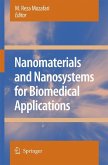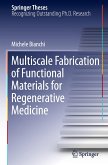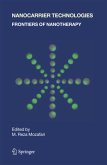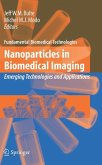Dear reader, In the past few years we have observed an interesting mutual interest of two fields of research and development in each other. Life sciences area researchers discovered the opportunities offered my micro- and nanotechnology, while people from the microfluidics and BIOMEMS area discovered the application potential of these technologies in cell biology. Unfortunately, these two research communities share little in common: they read and publish in different scientific journals, have incompatible jargons, attend separate conferences, and have a different scientific approach and culture. This is most strikingly illustrated when you give a MEMS researcher some cells to experiment with, or hand over a couple of chips to a cell biologist. Or imagine explaining a microengineer different intracellular apoptotic pathway or a cell biologist about tensile stress in underetched LPCVD membranes. And yet, there is an enormous potential of combining the expertises available in these two fields. It is our goal to illustrate this potential with this book focusing on microfluidics technologies for "cellomics", research on or with cells. In our view, the field is still too immature to compile a textbook for students, and this volume is rather meant to be a collection of first class papers of leaders in this emerging field. This volume will enable researchers from both communities to get a rapid "state of the art" overview, and also to get an impression what kind of possibilities this area offers. Micro- and nanotechnologists will get inspiration about applications, life science researchers about technological capabilities.
From the reviews:
"This is a very timely book on many of the applications of microfluidic chips for cell related experiments. On 360 pages, a series of world renown authors in the 'lab on chip' area disclose some of their most exciting work, give us their opinion and overview of the most rapidly growing application of microfluidics.
The contents is organized in chapters for microfluidic devoices, pretreatment of cell samples, liposome model systems, electric field cell manipulation, electroporation, patch clamp, mechanical measurements on cells, apoptosis, cell cultivation, embryonic stem cell work, single cell experiments, organelle analysis and tissue formation. The book is easy reading for both, engineers and (probably) biologists, with many b/w graphs and photos. There are even a few color plates at the end of the book. Each chapter comes with up-to-date references taken from the scientific literature.
Even though I do not subscribe to terms like 'cellomics' or 'lab on chips,' which I believe are of no scientific value, I actually like the book! The many different authors guarantee a maximum in detail knowledge and expertise, however, the book represents rather a collection of short stories than a comprehensive overview. I also wonder if any biologists were consulted in the process. I suspect the majority of authors are from the engineering sector. I would appreciate a chapter or two on basic microfab, scaling laws related to cell biology and fundamentals of cell biology methods.
Overall, I can recommend this book to any researcher in the 'lab on chip' area, and to curious engineers and scientists in the fields of biology, medicine, chemistry and physics." (Andreas Manz, London, February 6, 2005)
"This is a very timely book on many of the applications of microfluidic chips for cell related experiments. On 360 pages, a series of world renown authors in the 'lab on chip' area disclose some of their most exciting work, give us their opinion and overview of the most rapidly growing application of microfluidics.
The contents is organized in chapters for microfluidic devoices, pretreatment of cell samples, liposome model systems, electric field cell manipulation, electroporation, patch clamp, mechanical measurements on cells, apoptosis, cell cultivation, embryonic stem cell work, single cell experiments, organelle analysis and tissue formation. The book is easy reading for both, engineers and (probably) biologists, with many b/w graphs and photos. There are even a few color plates at the end of the book. Each chapter comes with up-to-date references taken from the scientific literature.
Even though I do not subscribe to terms like 'cellomics' or 'lab on chips,' which I believe are of no scientific value, I actually like the book! The many different authors guarantee a maximum in detail knowledge and expertise, however, the book represents rather a collection of short stories than a comprehensive overview. I also wonder if any biologists were consulted in the process. I suspect the majority of authors are from the engineering sector. I would appreciate a chapter or two on basic microfab, scaling laws related to cell biology and fundamentals of cell biology methods.
Overall, I can recommend this book to any researcher in the 'lab on chip' area, and to curious engineers and scientists in the fields of biology, medicine, chemistry and physics." (Andreas Manz, London, February 6, 2005)








